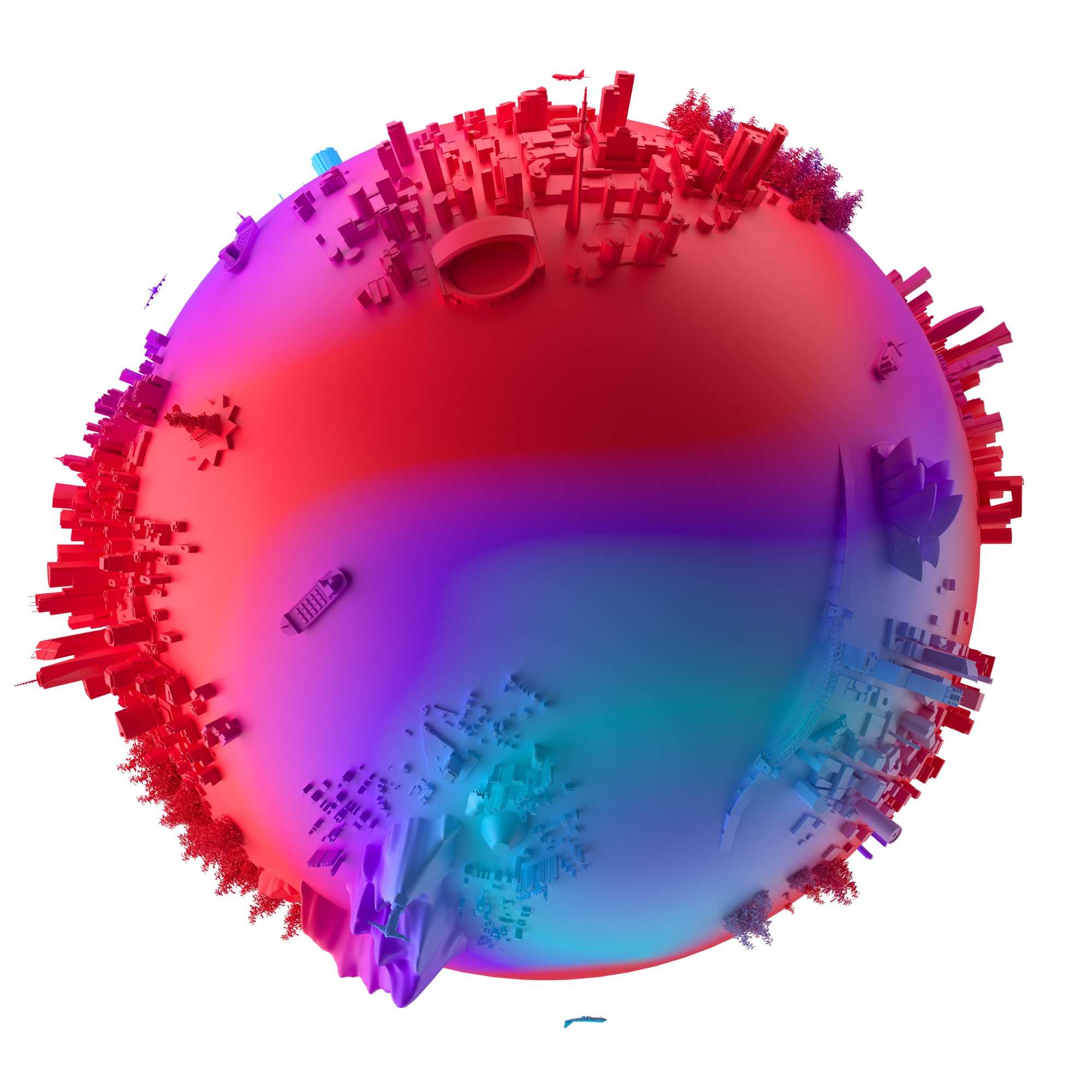Insight & Strategy | Ford: Very Gay Raptor
How a car brand stood up against discrimination on social media and earned 184 million impressions in the process.
This article was originally published in Contagious I/O on 16 June 2022
Share this post
At the end of May 2021, Ford promoted its new Ranger Raptor Special Edition pickup truck in Europe with an action-packed, adrenaline-inducing video that showed the vehicle outpacing a landslide.
About two weeks after the video was released, one YouTube viewer commented that the colour of the truck was ‘very Gay’, suggesting that Ford paint it ‘BlackNGold [sic] or camo’ instead.
In response, on 25 June, Ford tweeted a digital animation of the Raptor decked out with a new rainbow and glittering gold paint job, along with the caption ‘Very Gay was a compliment right?’, Happy Pride, and #VeryGayRaptor.
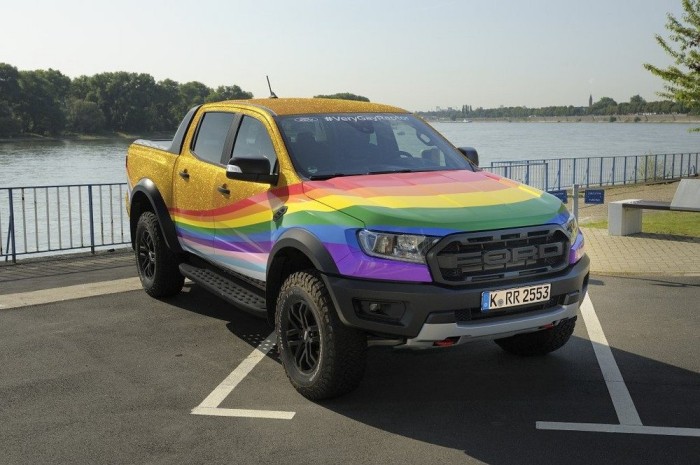
London-based agencies VMLY&R, MakerHouse and Hill+Knowlton Strategies, then worked with Ford to create the Very Gay Raptor pickup in real life and take it to the streets of Cologne, Germany, in celebration of Pride Day.
Results / According to the agencies, the campaign reached 22 million people and resulted in 184 million media impressions.
Update 13/07/2022: This campaign has won a Gold for Media at the 2022 Cannes Lions Festival for Creativity.
We caught up with Julian Watt, chief creative officer Europe for Ford at VMLY&R, and Joe Shields, creative at Hill+Knowlton Strategies, who told us:
- It was crucial that the brand be seen as authentic and not like it was capitalising on Pride Month, which is why it didn’t put any paid media behind the social post
- The campaign was designed to be supportive and celebratory in tone rather than attacking people outside of the LGBT+ community
- While Ford followed its digital campaign by creating a real-world car, the brand was careful not to let the idea consume its entire inclusivity strategy.
Tell me about the Ford brand, is its positioning different is Europe versus in the US?
Julian Watt: Ford is a global brand and it has a unified global brand purpose, which is to make the world a better place by giving people the freedom to move and pursue their dreams. That stands for the whole word, whether we’re talking about the UK, South Africa, the US, and so on. Ford is the world’s biggest truck company and that’s its USP. The product itself varies around the globe. For example, in the US, its flagship truck is the F-150, whereas in Europe it’s the Ranger and the Raptor, but other than that, the brand is relatively consistent in how it presents itself.
Who is the brand’s target audience?
Watt: Rather than age or gender, Ford’s audience is a psychographic one. It tries to reach people who take pride in the world around them and those who believe that their actions shape the world they live in.
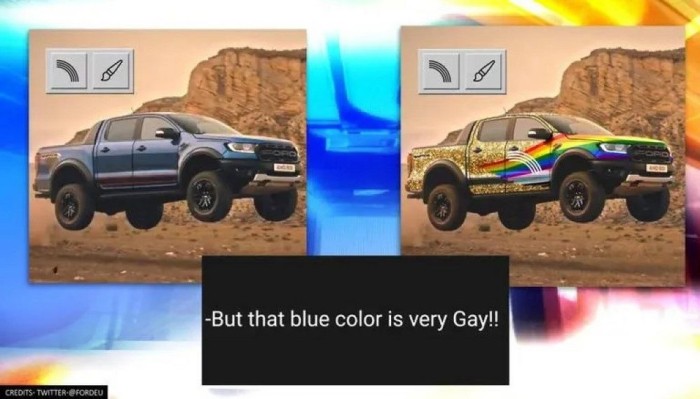
Who are Ford’s key competitors?
Watt: The automotive industry has been hugely disrupted and Ford’s embracing that disruption. In fact, it’s disrupting the industry itself. The brand recently announced an entirely new business structure between its electrification business and its commercial vehicle business. So, the competitive set is being redefined daily, now the competitors are coming from outside of the category.
There are non-automotive companies that have a bearing on mobility and then there are the automakers that are disrupting the whole industry. It’s no longer just about a car, it’s about travel and how mobility speaks to the way you live your life, the city you live in and every bit of technology you use.
What does this evolving landscape mean for automotive brands?
Watt: It puts the onus on the brand to be clear about what it believes in. People don’t necessarily connect with the product first, they connect with the brand. So, what the brand stands for becomes important regardless of what it’s selling.
Joe Shields: We’re not just selling metal; we’re selling an idea. This is especially true when you’re trying to explore new avenues of growth or delivering a new service. Once you diversify your product, you have to put the brand at the heart of everything you do to maintain consistency.
The point of this campaign is to find out why that polarisation occurs, address it, tackle it, and make the world a friendlier placeJoe Shields, Hill+Knowlton Strategies, London
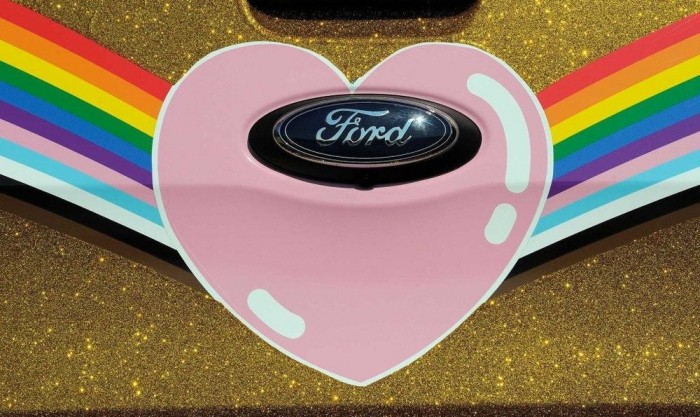
The Very Gay Raptor campaign all began when someone commented that the new Ranger Raptor pickup truck was ‘very gay’. Can you talk us through how the campaign came about?
Shields: It all started when we created a two-minute action packed epic to promote the new Raptor vehicle in Europe.
Watt: It wasn’t a typical ad campaign, it was just branded content for Ford enthusiasts. These people aren’t watching the video by accident. It’s not a pre-roll, it’s for people who actually like Ford.
Shields: A couple of days after it launched, our in-house producer and the director of the film told us someone had commented on the video to say that the blue Raptor was ‘very gay’. At the time, we sat there laughing about how ridiculous it was, but I couldn’t shake the comment. It simply felt like an opportunity to do something and that was the catalytic moment.
What happened next?
Shields: We made an eight-frame storyboard and asked lots of different people what they thought, including other creatives, as well as my peers in the LGBTQ+ community to make sure that it wasn’t completely off-key. Then, we did a digital paint job and spent some time thinking about how it could link to what Ford stands for, its purpose and why they shouldn’t let the comment slide to make it compelling for the client.
The idea had to be somewhat bulletproof in how we presented it because we knew it was going to be a risk for Ford to sign off on the campaign and enter the conversation around such a divisive subject.
How did Ford react to the idea when you pitched it?
Shields: Generally positive. They were happy to see something being brought to them that spoke to the brand’s broader purpose and the wider discussions that Ford is having internally as well. Of course, there were people along the way who questioned things and rightly so. It’s a stakeholder’s job to question whether it’s the right thing to do if there are grounds for that kind of response and so on. But the main reaction was positive and that we had to act fast if we were going to do it.
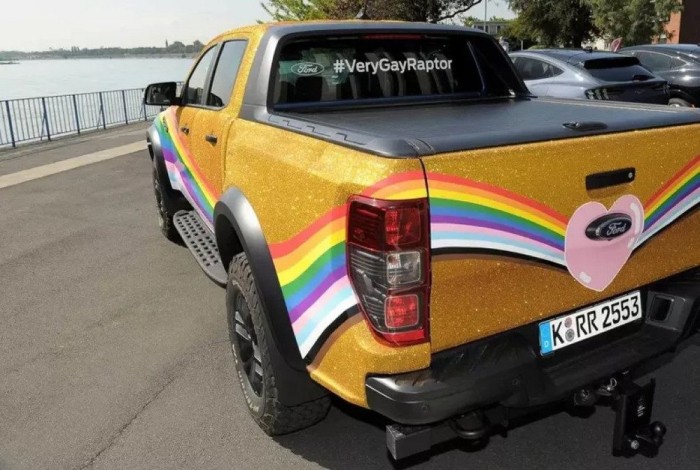
Did Ford set any KPIs?
Watt: If anything, the KPIs were about maintaining integrity. We didn’t want to be seen as doing anything indulgent.
How quickly did you create the digital Gay Raptor after spotting the comment?
Watt: It was a very quick turnaround. Something that was really important to us was not to put any paid media behind it, we didn’t want to shine a light on it and overdramatise the issue. It was crucial that Ford wasn’t seen as commercialising the response. Some people would notice it, and some wouldn’t, the most important thing was to be fast and reactive. Despite not having any paid media, it became the best performing post ever for Ford Europe.
How crucial do you think the fast turnaround was to the campaign’s success?
Shields: It was vital. We were approaching Pride Month at that point, so we wanted to land the campaign in time for that for the greatest impact and relevance. It all coincided with the 25-year anniversary of Ford’s internal pride community, which was the first in-house group for LGBTQ+ employees to be launched by a large-scale company in Germany. So, all of these things came together to make a quick turnaround crucial to its success.
What tone were you hoping to strike and why?
Watt: The tonality was extremely important. We didn’t want it to be a prickly, antagonistic response. We wanted to be firm and assertive, but also positive.
Shields: The campaign needed to come across as a celebration of the community rather than an attack on the people outside of it.
What kind of reactions did you get?
Watt: It was very positive, particularly in Europe. Publications like Unilad, Men’s Health and Drive Tribe [a social media platform for automotive enthusiasts] all applauded the idea, none of which are particularly LGBTQ+ aligned. Of course, some people said that they didn’t know why Ford was doing this and there were a few haters, which was disappointing to see. But I think that added more fuel to our fire and made us realise that we have to keep going because people are polarised and you can’t stop standing up for positive change. Provocative campaigns lead to provocative comments and that’s the power of social media – it gives everyone a voice.
Shields: Ford’s approach to the LGBTQ+ community is to be an ally. The brand doesn’t do it because it’s easy, but because it’s the right thing to do.
It’s glaringly obvious when a brand isn’t committed to a cause outside of a cultural momentJulian Watt, VMLY&R, London
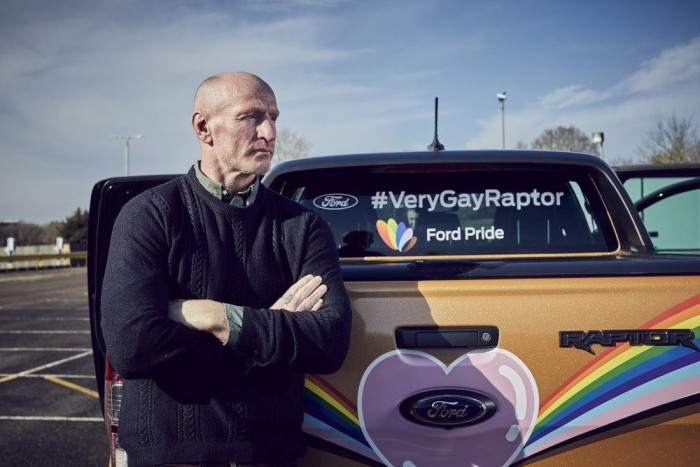
Why you decide to expand on the idea by creating the Very Gay Raptor in real life? How far into this campaign did this happen?
Shields: Lots of people began to respond to the social post with requests for the car to be made in real life. And it felt like a very natural progression to make something tangible that represented Ford’s commitment to the community rather than stopping with a one-off response. Just a few weeks after the social post, we revealed the car in Cologne in Germany, which is the heart of Ford’s enterprise.
Where else will the Very Gay Raptor travel and why?
Watts: A pickup truck dressed up in rainbows and gold glitter stands out in traffic and sparks conversation. We are taking it to places around the world so that people can see Ford is a brand that champions inclusivity and drives out discrimination. The car is actually booked in terms of appearance for a whole year.
It's going to be at places where the brand would typically make an appearance like automotive shows. We’ve also recently launched a content series called Tough Talks, in which Welsh rugby player Gareth Thomas drives the Very Gay Raptor around and interviews people about the notion of being ‘tough’. He’s interviewed two people so far, but it’s an ongoing project, so hopefully more great content will come out as time goes on. High performance off-road vehicles have no physical limitations, but, as human beings, we have all of these intellectual fears that hold us back, like difficult conversations – we’re scared of what people say. We’re combining the two to create positive change.
What challenges did you face along the way with this campaign and how did you overcome them?
Shields: One of the biggest challenges has been in where to send the physical car. A glittery rainbow vehicle could be seen as quite frivolous, but we want to use it to make a point against discrimination. We’ve had to say ‘no’ to a lot of people.Watt: There were also a lot of people who wanted to riff off of this idea and started creating loads of ‘Very gay this’ and ‘Very gay that’ copy for the brand. But one of our challenges has been to not let people get carried away. It was provocative because of the comment, but we don’t want that to consume the brand’s inclusivity communications.
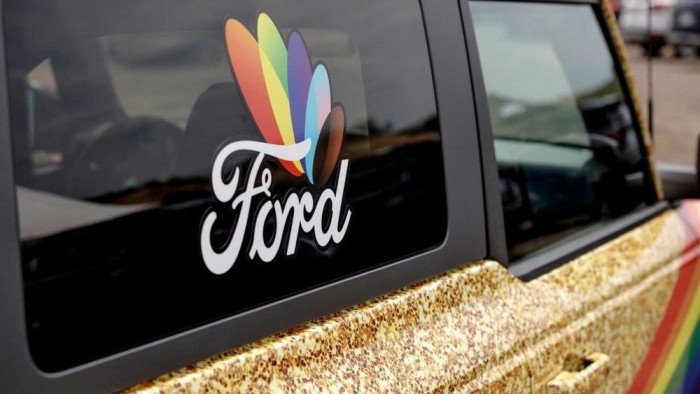
Communications in the automotive industry (particularly for products like pickup trucks) are notoriously hyper-masculine. Were you concerned about alienating Ford’s audience?
Shields: Ultimately, you have to stand up for what you believe and living its brand purpose is what drives Ford. Yes, some people might not be happy, but the point of this campaign is to find out why that polarisation occurs, address it, tackle it, and make the world a friendlier place.
Inversely, lots of brands have been accused of ‘rainbow-washing’, particularly around Pride month. How did you ensure Ford avoided being accused of this?
Watt: The problem with rainbow-washing is when a brand jumps on the issue of inclusivity for a certain time (eg, Pride) and then doesn’t do anything for the rest of the calendar year. It’s glaringly obvious when a brand isn’t committed to a cause outside of a cultural moment. Ford felt confident that it wouldn’t be perceived this way because it wasn’t a planned campaign, there was no marketing plan. It was a reaction to a comment that was made out of the blue.
Shields: The brand also has the authority to comment on this type of issue. As we mentioned, it was celebrating what is now a 26-year legacy of supporting the LGBTQ+ community across Europe. Every step of what they have said is backed up by real action; it’s not just a statement sent into the void.
What has been your single greatest learning from the campaign?
Shields: There are lots of examples of campaigns that have supported a marginalised community and been pulled, but that’s the worst thing you can do. You have to keep going in the face of adversity to be seen as authentic.
Watt: Good brands are part of culture, not just part of the commercial world. People get scared of things that sound provocative in a board room, but in reality, brands need it. This idea has proven that doing something you believe in is far less controversial or as difficult as you think.
